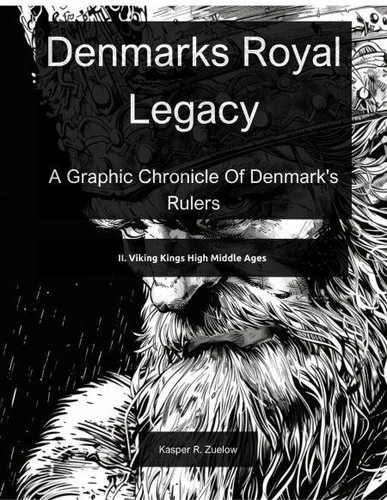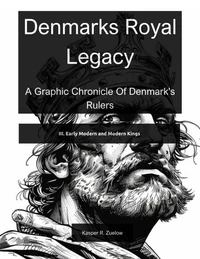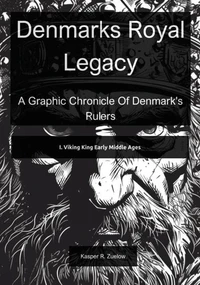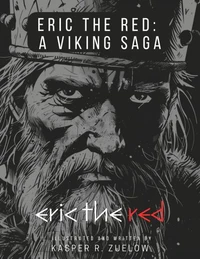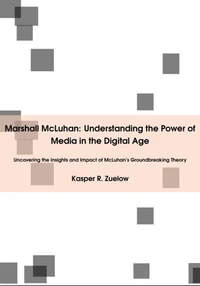Denmarks Royal Legacy: Viking Kings High Middle Ages. Denmarks Royal Legacy, #2
Par :Formats :
Disponible dans votre compte client Decitre ou Furet du Nord dès validation de votre commande. Le format ePub est :
- Compatible avec une lecture sur My Vivlio (smartphone, tablette, ordinateur)
- Compatible avec une lecture sur liseuses Vivlio
- Pour les liseuses autres que Vivlio, vous devez utiliser le logiciel Adobe Digital Edition. Non compatible avec la lecture sur les liseuses Kindle, Remarkable et Sony
 , qui est-ce ?
, qui est-ce ?Notre partenaire de plateforme de lecture numérique où vous retrouverez l'ensemble de vos ebooks gratuitement
Pour en savoir plus sur nos ebooks, consultez notre aide en ligne ici
- FormatePub
- ISBN8227685995
- EAN9798227685995
- Date de parution13/08/2024
- Protection num.pas de protection
- Infos supplémentairesepub
- ÉditeurBig Dog Books, LLC
Résumé
The Book provides an introduction to the Danish kings who reigned during the High Middle Ages, roughly from 1076 to 1250. This content is based on the ideas of Lars K. K. and Kasper R. Zuelow, and was created with their assistance. The abstract outlines the reigns of several notable Danish monarchs from this period. Olaf I Hunger, ruling around 1086-1095, struggled to maintain control amidst famine and rebellion against his authority.
Niels, who reigned from approximately 1104-1131, was able to consolidate power, but faced tensions with the Holy Roman Empire and Papacy over ecclesiastical matters in Scandinavia. The abstract then describes the reigns of Eric Lamb (1137-1146) and Sweyn Grade (1146-1157). Eric Lamb struggled to retain full control of the Danish kingdom, ultimately forced to split it with a rival prince amidst ongoing civil unrest.
Sweyn Grade briefly united the kingdom, but then faced continued civil war and rebellions before being assassinated by a rival. The book goes on to discuss the expansionist policies of Canute VI, who ruled from 1182 to 1202. Canute VI continued the territorial conquests initiated by his father, Valdemar, expanding Denmark's power and influence in northern Germany. In contrast, the reign of Christopher I (1252-1259) was marked by challenges from the Danish nobility and the powerful Hanseatic League, leading to a succession crisis and broader political instability.
The abstract concludes by noting that the precise chronological numbering and succession of Danish kings from this era remains a topic of scholarly debate, given the limited and inconsistent historical records available from that period.
Niels, who reigned from approximately 1104-1131, was able to consolidate power, but faced tensions with the Holy Roman Empire and Papacy over ecclesiastical matters in Scandinavia. The abstract then describes the reigns of Eric Lamb (1137-1146) and Sweyn Grade (1146-1157). Eric Lamb struggled to retain full control of the Danish kingdom, ultimately forced to split it with a rival prince amidst ongoing civil unrest.
Sweyn Grade briefly united the kingdom, but then faced continued civil war and rebellions before being assassinated by a rival. The book goes on to discuss the expansionist policies of Canute VI, who ruled from 1182 to 1202. Canute VI continued the territorial conquests initiated by his father, Valdemar, expanding Denmark's power and influence in northern Germany. In contrast, the reign of Christopher I (1252-1259) was marked by challenges from the Danish nobility and the powerful Hanseatic League, leading to a succession crisis and broader political instability.
The abstract concludes by noting that the precise chronological numbering and succession of Danish kings from this era remains a topic of scholarly debate, given the limited and inconsistent historical records available from that period.
The Book provides an introduction to the Danish kings who reigned during the High Middle Ages, roughly from 1076 to 1250. This content is based on the ideas of Lars K. K. and Kasper R. Zuelow, and was created with their assistance. The abstract outlines the reigns of several notable Danish monarchs from this period. Olaf I Hunger, ruling around 1086-1095, struggled to maintain control amidst famine and rebellion against his authority.
Niels, who reigned from approximately 1104-1131, was able to consolidate power, but faced tensions with the Holy Roman Empire and Papacy over ecclesiastical matters in Scandinavia. The abstract then describes the reigns of Eric Lamb (1137-1146) and Sweyn Grade (1146-1157). Eric Lamb struggled to retain full control of the Danish kingdom, ultimately forced to split it with a rival prince amidst ongoing civil unrest.
Sweyn Grade briefly united the kingdom, but then faced continued civil war and rebellions before being assassinated by a rival. The book goes on to discuss the expansionist policies of Canute VI, who ruled from 1182 to 1202. Canute VI continued the territorial conquests initiated by his father, Valdemar, expanding Denmark's power and influence in northern Germany. In contrast, the reign of Christopher I (1252-1259) was marked by challenges from the Danish nobility and the powerful Hanseatic League, leading to a succession crisis and broader political instability.
The abstract concludes by noting that the precise chronological numbering and succession of Danish kings from this era remains a topic of scholarly debate, given the limited and inconsistent historical records available from that period.
Niels, who reigned from approximately 1104-1131, was able to consolidate power, but faced tensions with the Holy Roman Empire and Papacy over ecclesiastical matters in Scandinavia. The abstract then describes the reigns of Eric Lamb (1137-1146) and Sweyn Grade (1146-1157). Eric Lamb struggled to retain full control of the Danish kingdom, ultimately forced to split it with a rival prince amidst ongoing civil unrest.
Sweyn Grade briefly united the kingdom, but then faced continued civil war and rebellions before being assassinated by a rival. The book goes on to discuss the expansionist policies of Canute VI, who ruled from 1182 to 1202. Canute VI continued the territorial conquests initiated by his father, Valdemar, expanding Denmark's power and influence in northern Germany. In contrast, the reign of Christopher I (1252-1259) was marked by challenges from the Danish nobility and the powerful Hanseatic League, leading to a succession crisis and broader political instability.
The abstract concludes by noting that the precise chronological numbering and succession of Danish kings from this era remains a topic of scholarly debate, given the limited and inconsistent historical records available from that period.

